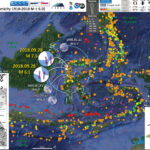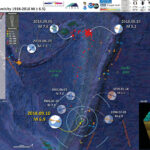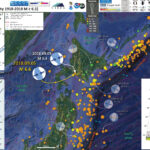Well, around 3 AM my time (northeastern Pacific, northern CA) there was a sequence of earthquakes including a mainshock with a magnitude M = 7.5. This earthquake happened in a highly populated region of Indonesia. This area of Indonesia is…
Earthquake Report: Kermadec
The earthquakes continue, every day. Today, there was a large earthquake associated with the subduction zone that forms the Kermadec Trench. This earthquake was quite deep, so was not expected to generate a significant tsunami (if one at all). There…
Earthquake Report: Hokkaido, Japan
Following the largest typhoon to strike Japan in a very long time, there was an earthquake on the island of Hokkaido, Japan today. There is lots on social media, including some spectacular views of disastrous and deadly landslides triggered by…



